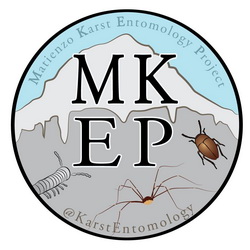Matienzo Karst Entomology Project
 Instigated in 2013/2014, the Matienzo Karst Entomology Project is a Natural History Museum initiative supported by the British Cave Research Association under an individual research permit from the Cantabrian government. The project has also received support from Oxford University (Department of Zoology), The British Entomological and Natural History Society and The University of Plymouth.
Instigated in 2013/2014, the Matienzo Karst Entomology Project is a Natural History Museum initiative supported by the British Cave Research Association under an individual research permit from the Cantabrian government. The project has also received support from Oxford University (Department of Zoology), The British Entomological and Natural History Society and The University of Plymouth.
At Easter 2014, this included the setting of baited pitfall traps in sites 0025, 0048, 2889, 3234, 3721 for short term studies over three weeks, arachnid species distribution by light level zonation, temperature and humidity data logging and spot collection of invertebrates from all environments was also carried out in the above cave sites plus sites 0012, 0013, 0017, 0035, 0059 and 0489.
Between Easter 2018 and Easter 2019 long term study baited pitfall trap were set in sites 0025, 0048, 2889, 3234, 3721 and 0086 and left in situ for twelve months. Further data logging, filming work and spot collection of invertebrates was also carried out across the Matienzo area in the above cave sites plus sites 0002, 0105, 0017, 0084, 0059, 0880, 1162, 1630, 4712 and 4713.
Ongoing results and log updates will be published via the Projects Twitter feed and in fauna specific journals as well as Cave and Karst Science in full on completion.
Project team: Tom Thomson, Amata Hinkle and Fergus McBurney
Updated: June 2019
See also the Reports, Papers and Presentations page, 2014 for more details. Tom Thomson and Fergus McBurney displayed an informative poster about the MKEP at 2015 Hidden Earth. Tom also wrote a piece for Descent 253 (December/January 2016/2017) outlining the past and future work of the Project.